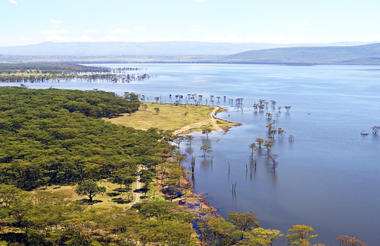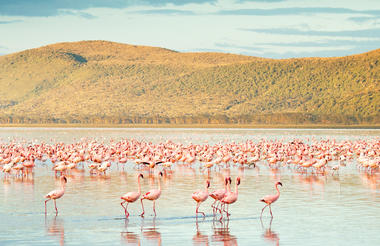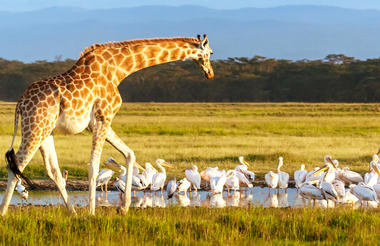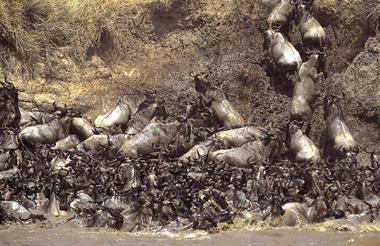Set on the banks of the Ewaso Ng'iro River and neighbouring the Buffalo Springs National Park, Samburu National Reserve is characterised by a spectacular landscape of rugged hills, undulating plains and riverine forests. The park is home to abundant wildlife including a variety of rare species such as the reticulated giraffe, the long-necked gerenuk, Somali ostrich, Grevy's Zebra, and Beisa Oryx. Visitors can also enjoy spotting over 900 elephants, a variety of predators, and over 450 bird species. The ancient culture of the Samburu people is still alive here, and it is possible to see two unique customs firsthand. In the first, watch as herds of cattle respond to each man’s individual voice as they call. In the second, see the tribesmen perform incredible dances that go back hundreds of years.



Nakuru is a fascinating city on the shores of western Kenya’s Lake Nakuru. The capital of Nakuru County located in the Great Rift Valley, about ten kilometres from the massive Menengai Crater. A hiking trail leads up to the rim of this ancient caldera, offering bird’s eye views over the lake and surrounds, and then plunges 400 metres down to the floor below, where visitors can walk among ancient forests. Lake Nakuru National Park, surrounding Nakuru, is home to exceptional birdlife, as well as over 50 varieties of mammals including lion, leopard, buffalo, zebra, giraffe, rhino, antelope and various primates. History and culture enthusiasts should make sure to visit the incredible Hyrax Hill prehistoric site.



The Masai Mara rcosystem includes the Masai Mara National Reserve and the adjacent and excellent Mara private conservancies (Mara North, Naboisho, Olare-Motorogi, Olderkesi being the prime ones). One of the highlights of the Masai Mara National Reserve is the annual wildebeest migration crossing rivers between the Serengeti and the Masai Mara. It is the largest mass movement of land mammals on the planet – with more than a million animals following the rains. But the Mara River crossing poiunts can be very crowded between July and October, when this happens. The selection of camp is very important to avoid being with many dozens of other vehicles. During this time, it is better to stay in a concession, with limnited tourist and vehicle numbers, to enjoy the abundant wildife in these superbly run private conservancies, and have a day trip to the Mara River if one really wants to try and see a river crossing. There are also a few conservancies located close to the Sand River, which give a much more exclusive and intimate experience, should the wildebeest and zebra chose to cross when you are there.







